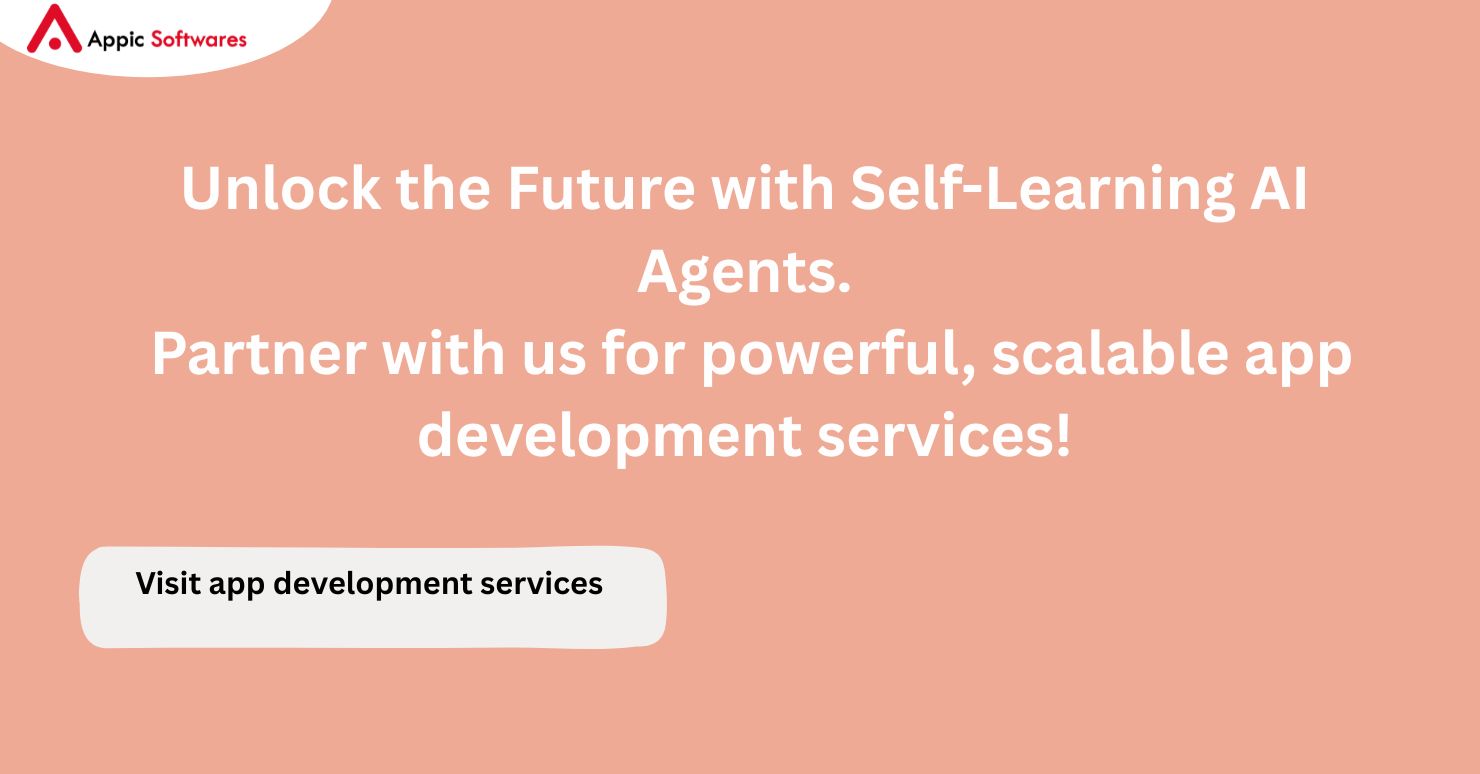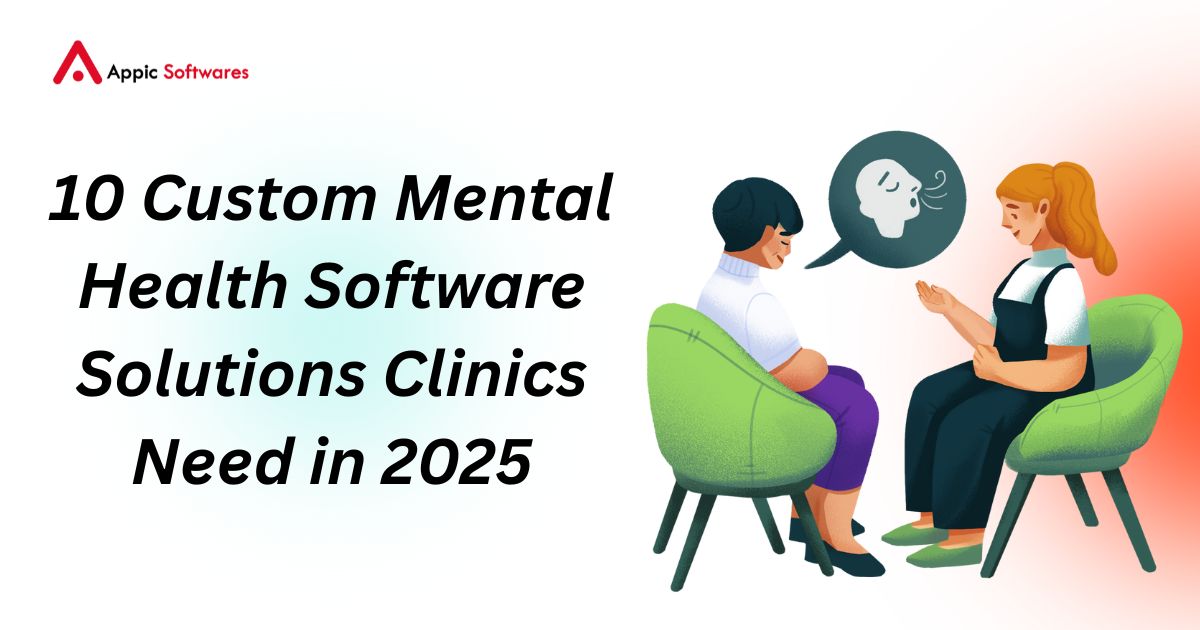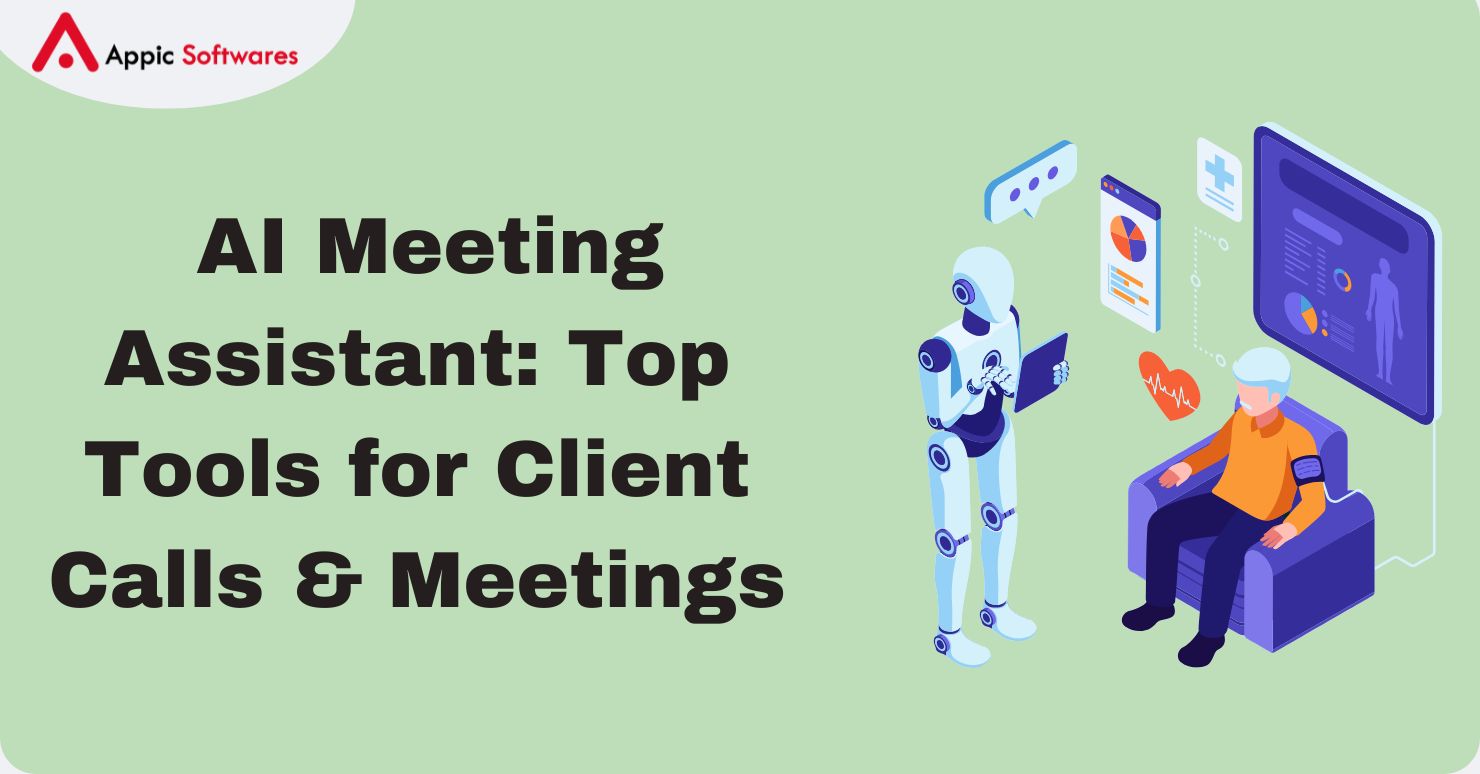
Do you know the AI Agent market size is growing at CAGR of 48.5%? Self-learning AI agents are computer programs that can learn from data and improve their actions over time. They change the way machines work and help solve many simple and hard tasks. In this article, we will talk about what learning AI agents are, the different types that exist, the cost to develop AI software, the steps needed to create one, and the tools that help make them work.
Learning AI agents are at the heart of many smart tools. They learn from data and use rules to choose what to do next. They are built to work on tasks like recognizing images, understanding speech, or playing games. These agents start with simple rules and get better as they work with more data. They can adjust their actions based on what they learn from each new piece of information. With each new task, these agents grow more accurate and more useful.
Learning AI agents help many fields, from education to business. Schools use them to help with lessons, companies use them to improve customer service, and hospitals use them to help with patient care.
What Are Self Learning AI Agents?
Learning agents are programs that learn and grow smarter with time. They use data to change their actions and improve their results. In simple words, a learning agent is like a student who gets better at a task by practising. These agents use rules to decide the next move based on past results. When they make mistakes, they learn and try again until they get it right.
The idea behind Learning AI Agents is to make machines that do not just follow fixed instructions. Instead, they change as they see more data. They can improve without a human having to change the code every time. This kind of agent is very useful when tasks are too complex for a fixed set of rules. They learn from each mistake and use that learning to work better in the future.
Many people today speak of the rise in smart computer systems. There is a strong link with current AI Development Trends that show how these agents are growing in use and capability.
These learning agents work by looking at past events. They compare results and adjust their next steps. They use simple math and rules to do this. This means that even if the task is hard, the agent keeps working to get better. The idea is to make machines that can learn on their own, much like how a child learns by trying and making mistakes. In this way, Learning AI Agents become a strong tool in many areas of work and study.
You may like reading: Sentiment Analysis AI
What Are The Types Of AI Agents?

Several types of AI agents work in different ways. Some agents act only on what they see right away. These are called reactive agents. They do not plan. Instead, they look at the data at the moment and choose the best action. Reactive agents are simple and work fast.
Other agents take time to think. They plan before they act. These are known as deliberative agents. They look at past events and try to plan a set of actions. They are a bit slower but can handle more difficult tasks. Then, some agents mix both ways of acting. These agents use simple rules for fast responses but also plan when needed.
In other words, the types of AI agents include reactive agents, planning agents, and mixed agents. Each type has its use. Some tasks need quick answers while others need careful thought. The study of Learning AI Agents covers all these types because each kind learns in its way.
Each type of AI agent uses learning to improve its work. For example, a reactive agent learns by trying one move after another. A planning agent learns by studying what worked best in the past. The mix of these styles helps designers choose the right agent for a given task. This flexibility makes Learning AI Agents a strong part of modern computing.
- Simple Reflex Agents – These agents act based on predefined IF-THEN rules without storing past data or learning from experiences. They respond only to the current input from their environment. Example: A thermostat that turns on heating when the temperature drops below a set point.
- Model-Based Reflex Agents – Unlike simple reflex agents, these have an internal model of the environment, enabling them to make better decisions by considering past states. They can work in partially observable environments by maintaining a history of interactions. Example: A self-driving car that remembers road signs and adjusts speed accordingly.
- Goal-Based Agents – These agents do not just react but plan their actions by evaluating different paths to achieve a specific goal. They analyze various possible actions and select the one that leads most efficiently to the desired outcome. Example: A GPS navigation system that finds the shortest route based on real-time traffic.
- Utility-Based Agents – These agents extend goal-based reasoning by optimizing decisions based on a utility function, which measures the best outcome among multiple possibilities. They consider factors like efficiency, cost, and risk. Example: AI-powered stock trading bots that weigh risks and rewards before making investment decisions.
- Learning Agents – The most advanced type, these agents learn from past experiences using machine learning and reinforcement learning techniques. They continuously improve their decision-making by analyzing past actions and adapting to new situations. Example: AI assistants like Siri and Alexa, which get better at understanding user preferences over time.
How Much Does It Cost To Develop Self Learning AI Agent?
Here is a tabular representation of AI Agent development cost:
| Component | Basic ($5k – $20k) | Mid-Level ($20k – $50k) | Advanced ($50k – $150k+) |
| AI Model Development | $2,000 – $5,000 | $5,000 – $15,000 | $15,000 – $50,000 |
| Data Collection & Processing | $1,000 – $3,000 | $5,000 – $10,000 | $15,000 – $40,000 |
| Cloud Computing & Storage | $500 – $2,000 | $3,000 – $8,000 | $10,000 – $25,000 |
| Machine Learning Algorithms | $1,500 – $5,000 | $7,000 – $15,000 | $20,000 – $50,000 |
| Natural Language Processing (NLP) | $1,000 – $4,000 | $5,000 – $12,000 | $15,000 – $40,000 |
| Speech/Voice Processing | $1,500 – $5,000 | $6,000 – $15,000 | $20,000 – $45,000 |
| UI/UX Design | $1,000 – $3,000 | $4,000 – $10,000 | $10,000 – $20,000 |
| Testing & Optimization | $1,000 – $3,000 | $5,000 – $12,000 | $15,000 – $30,000 |
| Integration & API Development | $1,000 – $3,000 | $5,000 – $12,000 | $15,000 – $30,000 |
| Security & Compliance | $1,000 – $3,000 | $4,000 – $10,000 | $10,000 – $20,000 |
| Maintenance & Support (Annual) | $1,500 – $5,000 | $5,000 – $12,000 | $15,000 – $30,000 |
| Total Estimated Cost | $10,000 – $25,000 | $40,000 – $80,000 | $100,000 – $200,000+ |
Key Cost Factors For Self-Learning AI Agents
-
Complexity of the Agent
Complex features such as those that incorporate NLP or information that allows real-time decision-making or self-learning capacity, require much more resources, time, and money to develop than basic ones.
-
Data Requirements
Information that is gathered needs to be of high quality, especially when training learning AI agents. Expenses relate to the acquisition of data, data curation, particularly data labelling and data closets to store the data. For instance, renting a GPU for model training is approximately $10,000- $50,000 and above depending on the time and size of the training.
-
Customization Needs
Solutions provided on a client-by-client basis are more expensive than solutions that are developed ‘out of the box’. That is why it is logical to increase the development cost for the more specialized agent functionality.
-
Integration with Existing Systems
Seamlessly integrating an AI agent into existing technology landscapes requires additional resources and expertise. This can add $10,000–$100,000 to the overall budget.
-
Ongoing Maintenance
Post-deployment support and updates are crucial for ensuring optimal performance over time. Maintenance costs typically account for 15–20% of the initial development cost annually.
How To Reduce AI Agent Development Cost?
For businesses aiming to optimize their budgets:
- Consider using pre-built AI models where possible.
- Outsource to an experienced AI development company to leverage their expertise without incurring long-term infrastructure costs.
- Focus on developing a Minimum Viable Product (MVP) to validate ideas before scaling up.
By understanding these factors and planning accordingly, organizations can make informed decisions about investing in learning AI agents that align with their goals while staying within budget constraints.
When planning a project, one must think of all the parts. Costs may add up in ways that are not obvious at first. It is important to count all the factors, from design to data and hardware. Many experts talk about the overall AI Agents Development Cost as a key factor when planning projects of this kind.
The cost can range from a few thousand dollars for a simple task to many millions for a complex system. In some cases, the cost may be lower if you use a cloud service that already has many tools built in. In other cases, the cost is higher if you need a custom solution. A careful check of each part of the project helps to set a realistic budget. This careful work makes the study of Learning AI Agents a detailed and rewarding task.
What Is The Process To Develop Self-Learning AI Agent?
The process to build a self-learning AI agent follows clear steps. First, you must plan the project. This means setting clear goals and outlining what the agent should do. Next, the design step takes place. The team decides on the best way to let the agent learn. They write the code and set up the rules that the agent will use. The next step is to gather data. The agent needs many examples to learn from.
Once you have the data, the team builds the agent. The agent starts by testing simple tasks. With each test, the agent learns and improves. Then, the team checks the agent to make sure it works as planned. After testing, the agent goes live. This means that it starts working on real tasks. Even after the agent is live, the team watches its work and makes changes when needed.
Throughout the process, clear steps help keep the work on track. The team works with clear tasks and simple rules. They fix problems quickly and make sure that the agent learns well. This method keeps the work clear and on point. The process helps to build Learning AI Agents that can meet many needs.
At one stage, the project may need experts to help build the code and test the agent. In such cases, one can choose to Hire AI Engineers to work on the project. This sentence stands alone to show that hiring experts is a good idea when a project is large or complex.
Each step in the process matters. Good planning leads to a clear design. The right data helps the agent learn well. Testing and support after launch keep the agent working properly. This full process makes the study and work with Learning AI Agents clear and helpful for many tasks.
What Is The Tech Stack To Develop A Self-Learning AI Agent?
The tech stack is the list of tools and languages used to build a self-learning AI agent. Many developers choose a simple and common set of tools to work with. They often use languages like Python and frameworks that help with data and machine learning. These tools help the team write clear code and test the agent quickly.
A tech stack usually includes a programming language, libraries for machine learning, and tools to handle large amounts of data. Cloud services often help store the data and run the programs. The tech stack must be chosen with care so that the agent learns well and runs fast. A good tech stack makes the work simple and clear.
When you choose the tech stack, you must look at what the project needs. For simple tasks, a small set of tools may work well. For larger tasks, more advanced tools are needed. The right tools can make the work of building Learning AI Agents faster and easier. The tech stack is a key part of any project and helps to set up the system for success.
At another point, it is appropriate to consult a firm that is conversant with the job. Several teams reach out to an AI Development Company to consult and get some recommendations concerning their technology stack.
Here is a tabular representation of the tech stack that you can use to develop Self Learning AI Agents:
| Component | Technologies & Tools | Purpose |
| Programming Languages | Python, Java, R, Julia, C++ | Core development of AI models and logic |
| Machine Learning Frameworks | TensorFlow, PyTorch, Keras, Scikit-learn | Building and training machine learning models |
| Deep Learning Libraries | TensorFlow, PyTorch, MXNet, Theano | Training deep neural networks |
| Natural Language Processing (NLP) | NLTK, SpaCy, Transformers (Hugging Face) | Processing and understanding human language |
| Reinforcement Learning | OpenAI Gym, Stable Baselines, RLlib | Implementing self-learning and decision-making |
| Data Processing & Analysis | Pandas, NumPy, Dask, Apache Spark | Handling large datasets and real-time processing |
| Cloud Computing | AWS (SageMaker, Lambda), Google Cloud AI, Azure AI | Cloud-based AI model training and deployment |
| Database Management | PostgreSQL, MongoDB, Firebase, MySQL | Storing training data and AI models |
| Big Data Technologies | Apache Hadoop, Apache Spark, Kafka | Handling massive data streams and batch processing |
| Computer Vision (if needed) | OpenCV, YOLO, FastAI | Image recognition and analysis |
| Speech Recognition (if needed) | DeepSpeech, Google Speech-to-Text, CMU Sphinx | Converting speech to text for AI interaction |
| API Development | FastAPI, Flask, Django REST Framework | Creating RESTful APIs for AI services |
| Model Deployment | TensorFlow Serving, MLflow, ONNX, Docker, Kubernetes | Deploying AI models efficiently |
| Version Control | Git, GitHub, GitLab, Bitbucket | Code collaboration and version management |
| Security & Authentication | OAuth, JWT, OpenID, CyberArk | Ensuring AI model and API security |
| Monitoring & Logging | Prometheus, ELK Stack, Datadog, Grafana | Performance monitoring and error tracking |
Final Words
To build self learning AI agents can be said to be a straightforward process that entails planning, easy steps, and choice-making. The whole process encompassing the aspects of design, development, implementation, as well as testing of software forms one of the most vital aspects. Another consideration is that the data, the group, and the hardware should be considered when planning for the job. Finally, it should be able to optimize the errors and perform better than before when the next task is to be done.
Are you ready to build a smart, self-learning AI agent? We are here to help. Get in touch with us to ask your questions or discuss your project. Our team is ready to support you at every step. Contact us now and begin your path to innovative AI solutions.
FAQs
1. Why should I hire developers in India for AI agent development?
India offers a large pool of skilled developers with expertise in AI technologies at competitive rates. When you hire developers in India, you benefit from high-quality work, cost savings, and flexible engagement models.
2. How do I choose the right team for my self-learning AI agent project?
Look for companies with proven experience in AI and machine learning, strong client testimonials, and transparent development processes. It’s ideal to hire developers in India who offer end-to-end support from ideation to deployment.









